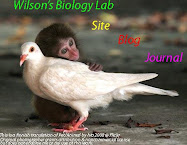Sea Slug
A green sea slug was found that seems to be part animal, and part plant. It is the first animal to produce the plant pigment Chlorophyll. The slugs seem to have taken some of the genes from algae that they eat. With these stolen genes, they can carry out photosynthesis. The slugs can make their own energy without having to eat. This of course is very beneficial when it comes to survival. Sidney Pierce studied these green sea slugs, called Elysia Chlorotica for around 20 years. January Seventh was the first time that multicellular animals produced chlorophyll. The sea slugs live in the salt marshes in New England and Canada. They take the genes needed to make the green chlorophyll and the small cell parts called chloroplasts which are used to conduct photosynthesis. The scientists doubted this, so they designed an experiment. In the experiment, the researchers collected them, and put them in a tank without any food. As long as the sea slugs had light on them for 12 hours a day, the slugs could survive. The researchers used a radioactive tracer to make sure that the slugs were actually producing the chlorophyll and not stealing from algae. They actually pass it on to future generations. The babies of the sea slug theives can produce their own chlorophyll, but they can't produce photosynthesis until they've eaten enough algae to steal the necessary chloroplasts. Scientists aren't quite sure how the slugs can actually take the genes that they need. It is obvious that they take DNA from other organisms, but the mechanics are still unknown.





This is really cool. I find it interesting that the sea slugs can steal genes but we cannot (when we eat).
ReplyDeleteReally really interesting. It is amazing that these sea slugs can steal genes. Maybe after some experiment scientists will find out if there is a way that humans can steal genes from other animals!
ReplyDeleteGood choice for experiment.
ReplyDeleteI am amazed that this is possible.
Hopefully humans could do this so we don't have to eat so much.
This is awesome! It is so cool that this animal can take a trait from the food that it eats. This is very benoficial. If this were to happen to a lot of other animals though it could set off the balance in the tree of life.
ReplyDeleteI would like it if you talked more about how the genes are stolen. Do the slugs just incorporate the appropriate organelles into their cells or do they actually copy the DNA that is needed for their cells to know to produce the chloroplasts. And even if you don't know the researchers should have a vague notion at the very least.
ReplyDeleteWow. I never would have thought! Animals that can take a trait from the food it eats. Good and interesting article. Too bad humans can't do this. We could solve the world's food problem.
ReplyDelete